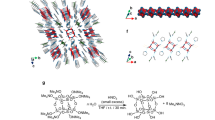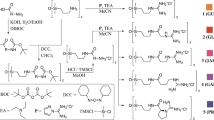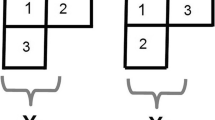Abstract
CRYSTAL structure examination has shown that quinol molecules may link by hydrogen bonds in a special manner. The compound SO2.3C6H4(OH)21 is found to have a rhombohedral lattice; the corresponding hexagonal unit cell, a = 16·3, c = 5·81 A., contains nine molecules of quinol and three of sulphur dioxide. From X-ray intensity relationships and absent spectra, the evidence of face development, and the negative results of pyro-electric and piezoelectric tests, the space group should be R3. For β-quinol, Caspari2 found a unit cell of very similar dimensions, without a centre of symmetry, and of the possible space groups C13–C3 and C43–R3 preferred C13–C3; a determination of atomic positions was not attempted. We have confirmed the polar character, but from absent spectra find the space group to be (C43–R3. From the great similarity, after allowance for the sulphur dioxide, between our X-ray data for β-quinol and the sulphur dioxide compound, the two structures must have much in common. As a safeguard, therefore, against erroneous conclusions due to faulty space group suppositions, the structure of the sulphur dioxide compound was developed, without the initial assumption of centrosymmetry, by three-dimensional Patterson and Fourier methods. In the early stages this procedure brought in a symmetry centre, and for the subsequent work the space group was taken as R3 in accordance with this and the other evidence.
This is a preview of subscription content, access via your institution
Access options
Subscribe to this journal
Receive 51 print issues and online access
$199.00 per year
only $3.90 per issue
Buy this article
- Purchase on Springer Link
- Instant access to full article PDF
Prices may be subject to local taxes which are calculated during checkout
Similar content being viewed by others
References
Clemm, A., Ann., 110, 352 (1859).
Caspari, W. A., J. Chem. Soc., 130, 1093 (1927).
Zachariasen, W. H., Z. Krist, 88, 150 (1934).
Author information
Authors and Affiliations
Rights and permissions
About this article
Cite this article
PALIN, D., POWELL, H. Hydrogen Bond Linking of Quinol Molecules. Nature 156, 334–335 (1945). https://doi.org/10.1038/156334a0
Issue Date:
DOI: https://doi.org/10.1038/156334a0
This article is cited by
-
Neon encapsulation by a hydroquinone organic crystalline clathrate under ambient conditions
Communications Materials (2023)
-
Describing hydrogen-bonded structures; topology graphs, nodal symbols and connectivity tables, exemplified by five polymorphs of each of sulfathiazole and sulfapyridine
Chemistry Central Journal (2015)
-
Chemistry Central Journal themed issue: Current Topics in Chemical Crystallography
Chemistry Central Journal (2014)
-
Interpenetrating inclusion lattices: Comparison of the Β-hydroquinone and ellipsoidal clathrate structures
Journal of Structural Chemistry (1999)
-
Inclusion Compounds ? possibility of their combination and use in different branches of chemistry
Journal of Inclusion Phenomena and Molecular Recognition in Chemistry (1992)
Comments
By submitting a comment you agree to abide by our Terms and Community Guidelines. If you find something abusive or that does not comply with our terms or guidelines please flag it as inappropriate.



